Conservation Targets
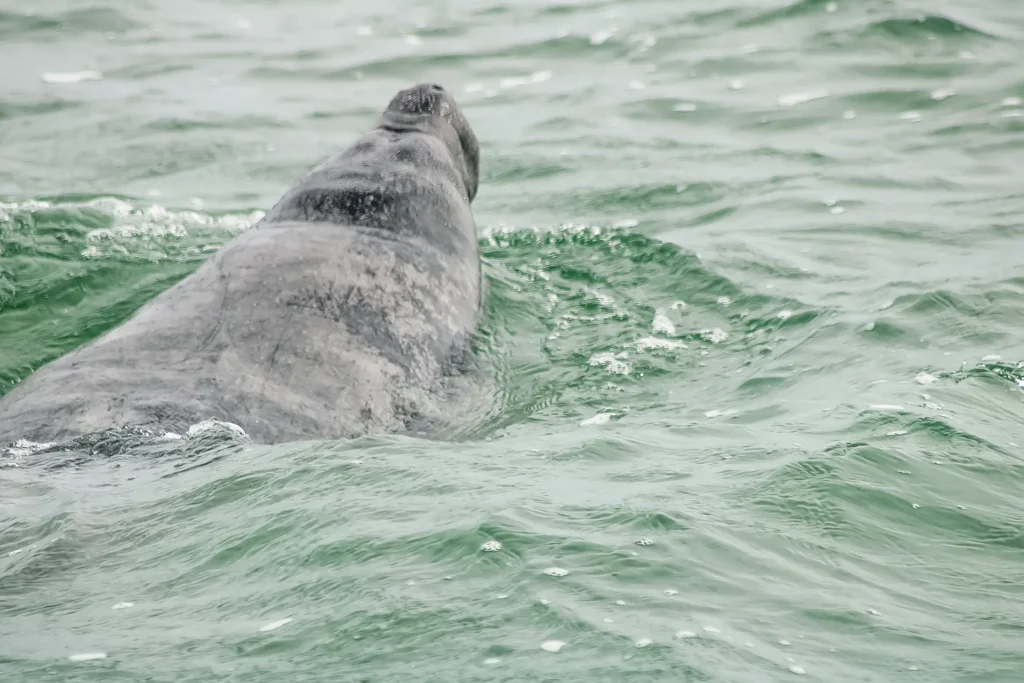
The Antillean manatee (Trichechus manatus manatus), a sub-species of the West Indian manatee, is considered endangered (IUCN, 2015), and is protected under the Belize Wildlife Protection Act (No. 4 of 1981). Corozal Bay Wildlife Sanctuary was established for its national and regional importance for maintaining the viability of Antillean manatees and is highlighted as particularly important for mating and calving (Auil, 2008). SACD activities are focused on maintaining and improving the viability of manatees in the CBWS.
Presently, the manatee population in CBWS is monitored through aerial surveys, boat-based drone surveys of identified aggregation areas (identified resting holes), and recordings of opportunistic sightings. SACD also responds to manatee stranding and distress reports in the Corozal Bay area.
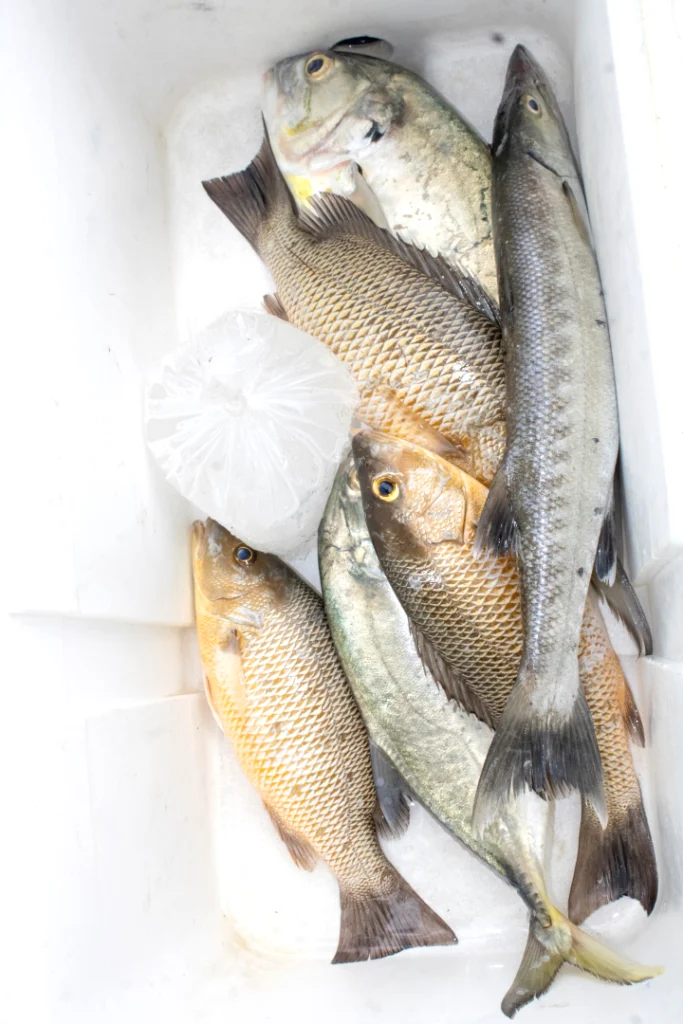
Despite being established as a non-extractive protected area, fishing within the Corozal Bay Wildlife Sanctuary (CBWS) has been identified as a traditional resource-use, practiced from generation to generation, generating an income for families, and providing an important protein source in stakeholder communities. SACD has been successfully lobbying for recognition of this activity within the National Protected Areas System Act, through a transition from wildlife sanctuary cat. 1 to cat. 2, to ensure that traditional fishermen can continue to support their families from fishing, nonetheless recognizing the need to ensure that it is based on an effective sustainable use plan.
Local consultations suggest that commercial fish species in CBWS are threatened by unsustainable fishing, with the disappearance of the sawfish and a number of other species declining over the last 30 years.
Local fish populations fluctuate within the Bay dependent on the changing physical parameters, which are affected by seasonal weather patterns.
The beach trap fishery has been identified as the most feasible way to survey local fish populations and has been monitored since 2011, with baseline results summarized in the SACD report “Planning for a Sustainable Fishery” (SACD, 2012). Continued monitoring provides information on seasonal fluctuations and trends, feeding into management decisions.
Commercial Fish Species:
- Yellowfin mojarra
- Striped mojarra
- Barracuda
- Snook
- Blue striped grunt
- Grey snapper
- Crevalle/Horse-eye Jack
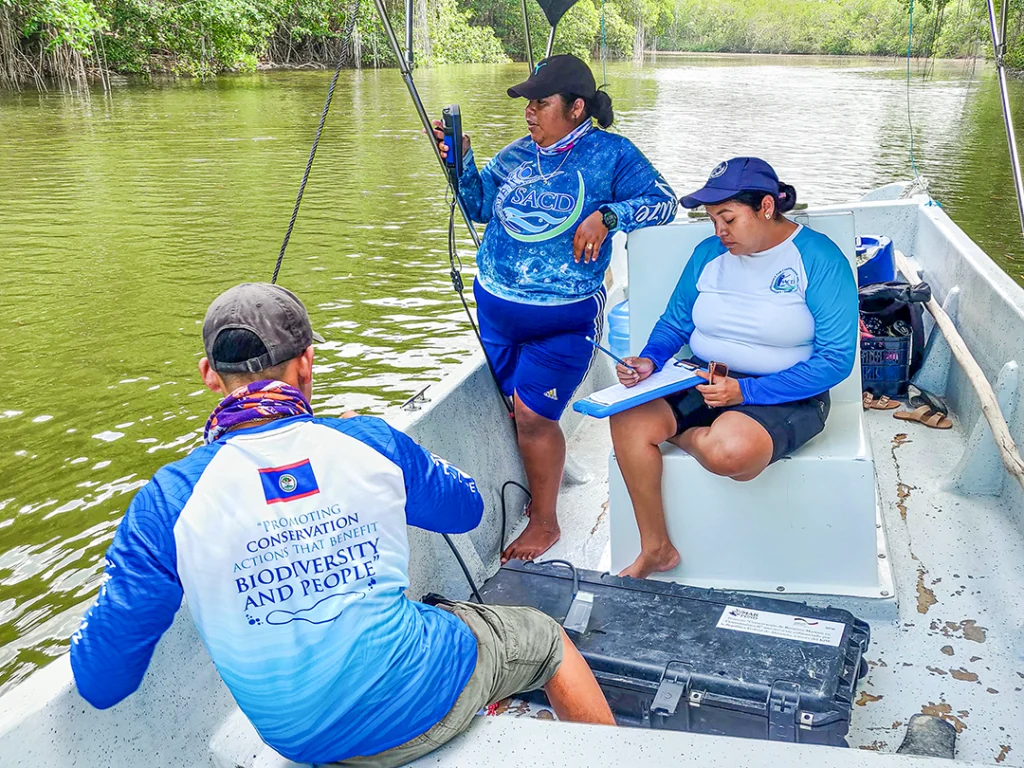
Corozal Bay Wildlife Sanctuary contains a significant portion of the largest estuarine system emptying onto the Meso-American reef. As a transitional zone between fresh and salt water, it has a wide variety of rapidly changing environments. SACD is implementing a comprehensive water quality monitoring program – generating data on salinity, temperature, pH, dissolved oxygen and turbidity – to monitor of changes in water quality of the bay and the rivers that feed it (Rio Hondo and Nuevo).
Water Quality Parameters:
- Dissolved Oxygen
- pH (acidity)
- Turbidity
- Temperature
- Salinity
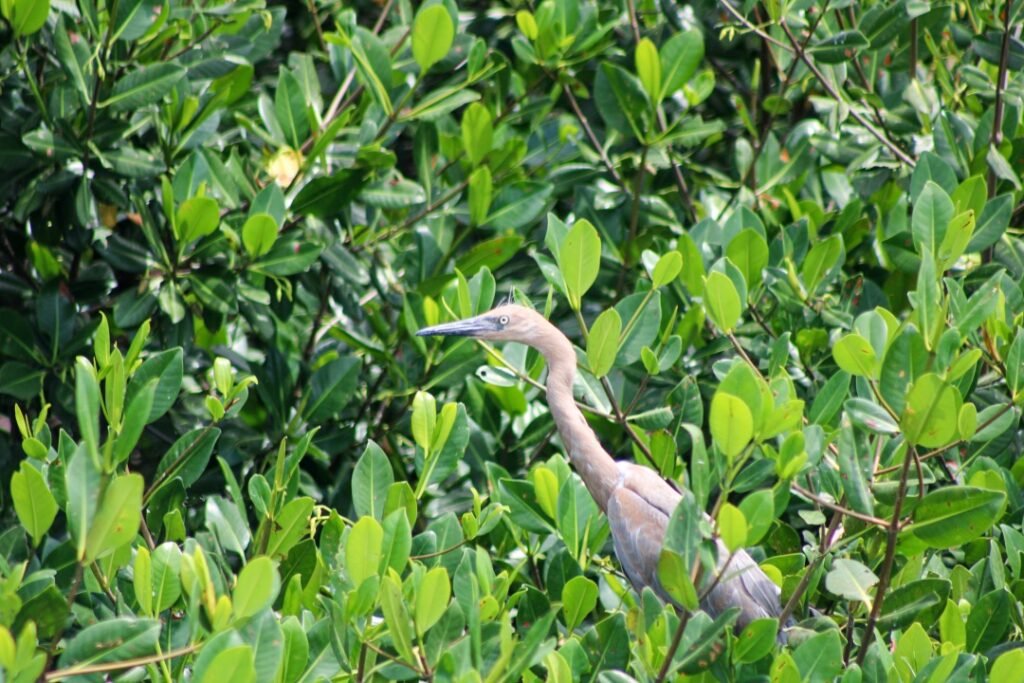
CBWS is home to coastal mangroves, littoral forest and the small mangrove cayes that provide important nesting and foraging habitats for wetland birds. The status of colonial nesting bird colonies is monitored by their size and nesting success. The availability and quality of fish and/or invertebrates available in the surrounding landscape/seascape, and management activities to mitigate human impacts, indicate Corozal Bay’s ability to sustain and support foraging of these nesting bird species.
Cayo Falso, a mangrove island to the west of Sarteneja, supports nesting grounds for the majority of the key species in CBWS. Immediately adjacent to the Sanctuary the protected islands in Shipstern Lagoon, the largest of Belize’s coastal lagoons, support two nesting colonies of American woodstorks (Mycteria americana). A third lies in Bennett’s Lagoon in the Bulkhead area adjacent to the eastern coastline of Belize.
SACD conducts monthly (boat surveys) and annual surveys (aerial surveys) to monitor important bird nesting colonies and possible threats.
Key nesting species in CBWS:
- Magnificent frigatebirds (Fregata magnificens)
- Brown pelicans (Pelecanus occidentalis)
- Great egrets (Ardea alba)
- Reddish egrets (Egretta rufescens)
- Roseate spoonbills (Platalea ajaja)
- White ibis (Eudocimus albus)
- Cormorants (Phalacrocorax )
- Several species of heron
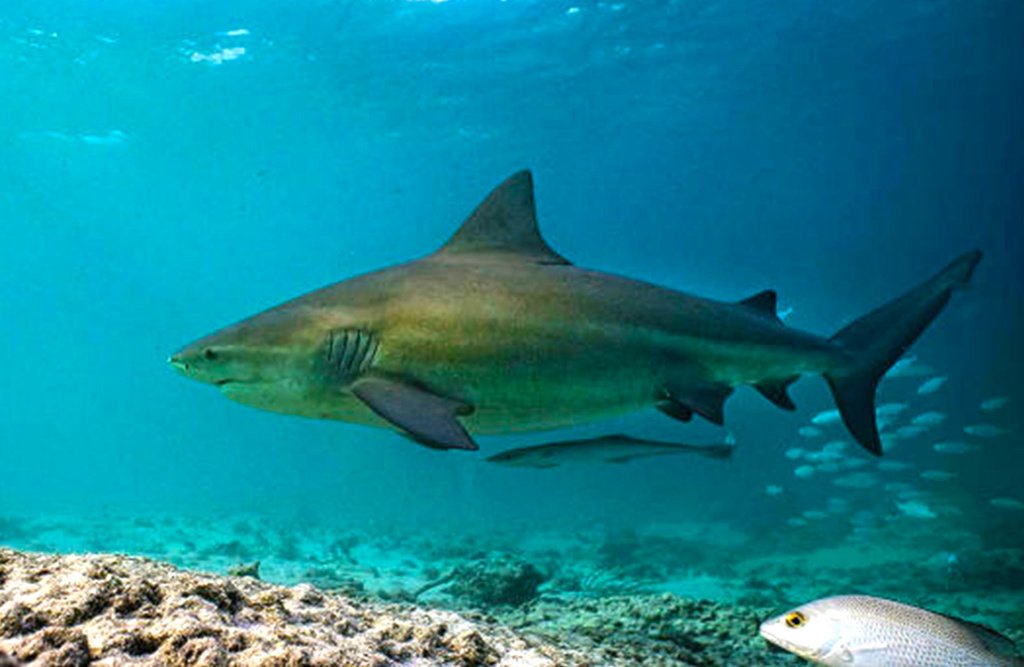
There are at least four shark species reported in CBWS (Bonfil, 1997) – bull sharks (Carcharhinus leucas), blacktip sharks (C. limbatus), nurse sharks (Ginglymostoma cirratum) and bonnethead sharks (Sphyrna tiburo) – mostly sighted in the Bulkhead Shoal area to the southern end of the Wildlife Sanctuary. The Wildlife Sanctuary is considered an important nursing and pupping area for these elasmobranchs, and recent surveys have highlighted it as the only documented bull shark nursery in Belize (Graham, 2010). The presence of a mixture of juvenile and adult longnose stingrays (Dasyatis guttata) of both sexes suggests that coastal lagoons such as Spanish Point are important for this species at different life stages, particularly as a potential pupping site and as a site that maturing longnose rays move to at times when salinity is reduced. Also recorded are southern stingrays (Dasyatis americana) and Caribbean whiptail stingrays (Himantura schmardae). SACD is collaborating with the Belize Shark Project (MarAlliance) to build a greater knowledge of shark and ray use of CBWS.
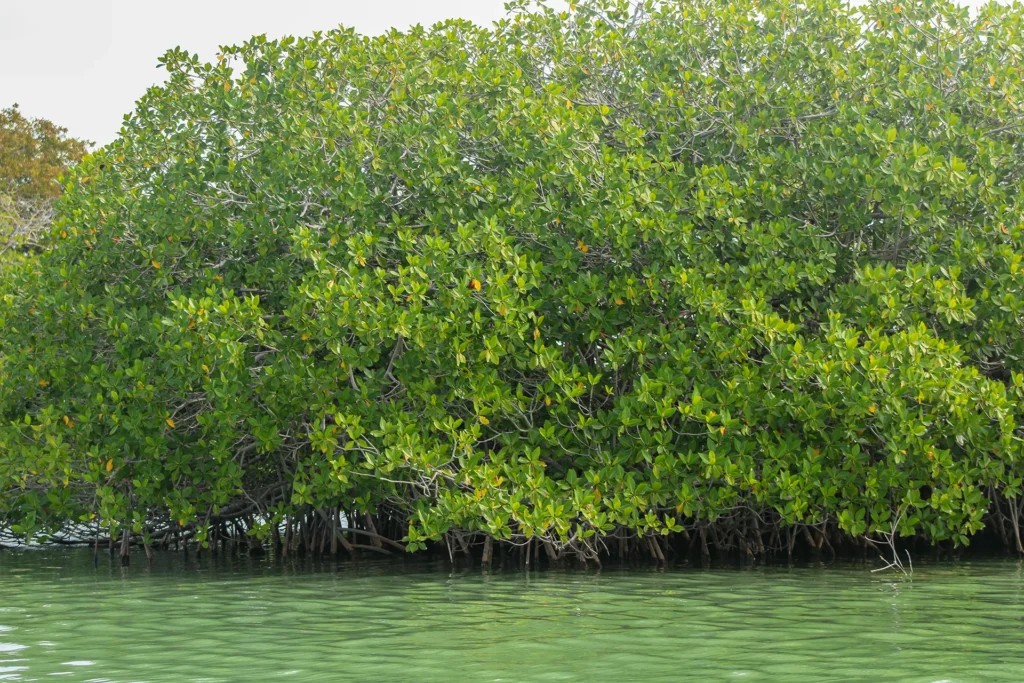
CBWS has some of the most extensive mangrove habitats in Belize, supporting a diverse range of birds, mammals, crustaceans and fish. In their multi-functional capacity they form the basis of a complex marine food chain, create key breeding habitats, establish sheltered waters that offer protection to fish and other organisms in the shallow, coastal lagoons, stabilizing bottom sediments, and protecting shorelines from coastal erosion. They have an important role in preserving water quality through reducing pollution by filtering suspended material and assimilating dissolved nutrients. Maintenance of mangrove areas has been identified as critical for optimal ecosystem function, especially in the face of a changing climate. Baseline mapping of the coastline vegetation was completed in 2011 (Lloyd et al., 2011) and is updated on a regular basis.
Mangrove species in CBWS:
- Red Mangroves
- Black Mangroves
- White Mangroves
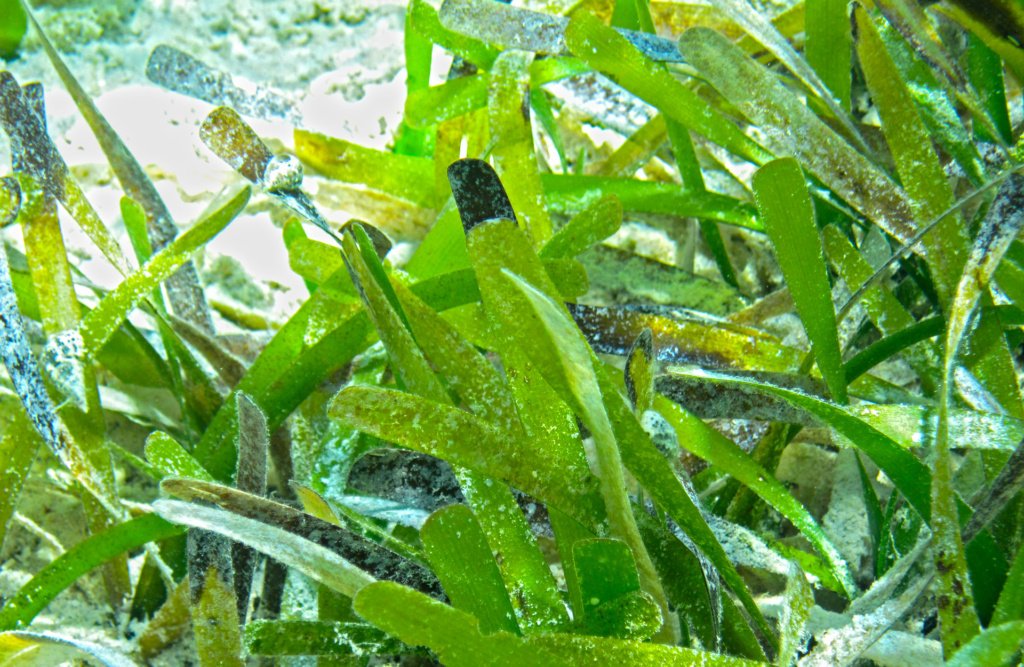
Seagrass forms the basis of an important, highly productive ecosystem, supporting the traditional fishing industry and providing nurseries, shelter, and food for a wide variety of commercially, recreationally and ecologically important species. The two key species of seagrass found in CBWS are turtle grass (Thalassia testudinum) and shoal grass (Halodule wrightii). Baseline mapping of seagrass beds started in CBWS as part of the project “Establishing the baseline for seagrass and mangrove area cover in five Marine and Coastal Protected Areas within the Meso-American Reef area”, and aims to provide a baseline on seagrass habitats through remote sensing and ground truthing data.
Species of seagrass in CBWS:
- Turtle grass (Thalassia testudinum)
- Shoal grass (Halodule wrightii)
- Manatee grass (Syringodium filiforme)
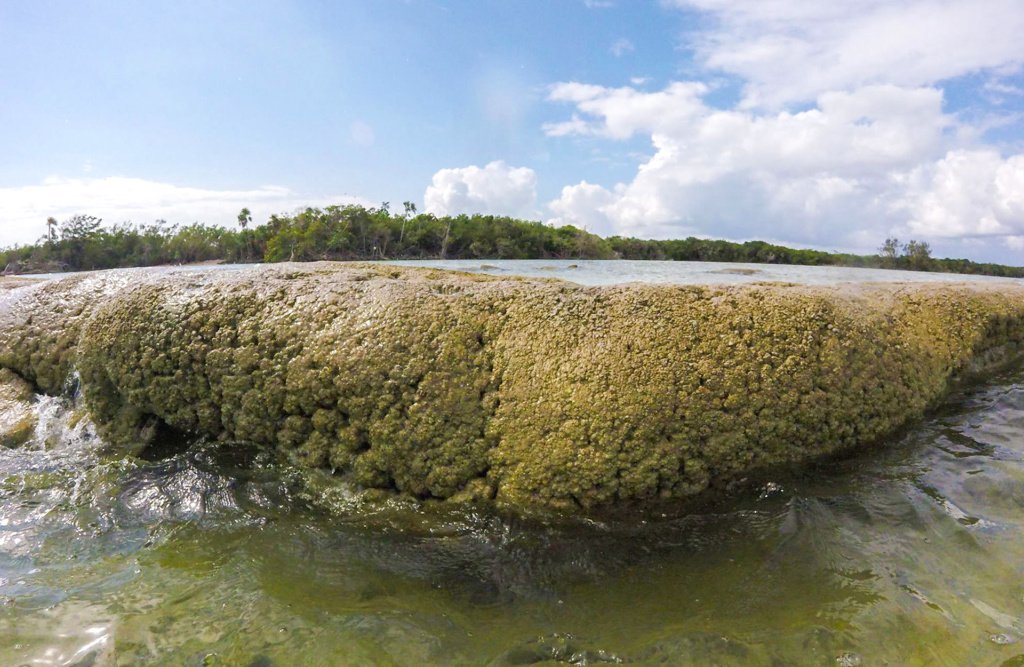
Corozal Bay Wildlife Sanctuary houses one of the few modern stromatolite reefs in the world. The stromatolite reefs are made up of cyanobacteria mats that form from a biofilm that binds together sediment and cyanobacteria. Over time, the surface mat solidifies and a new mat of cyanobacteria forms building up these stone-like formations. CBWS is globally important in the protection these rare reef structures.
